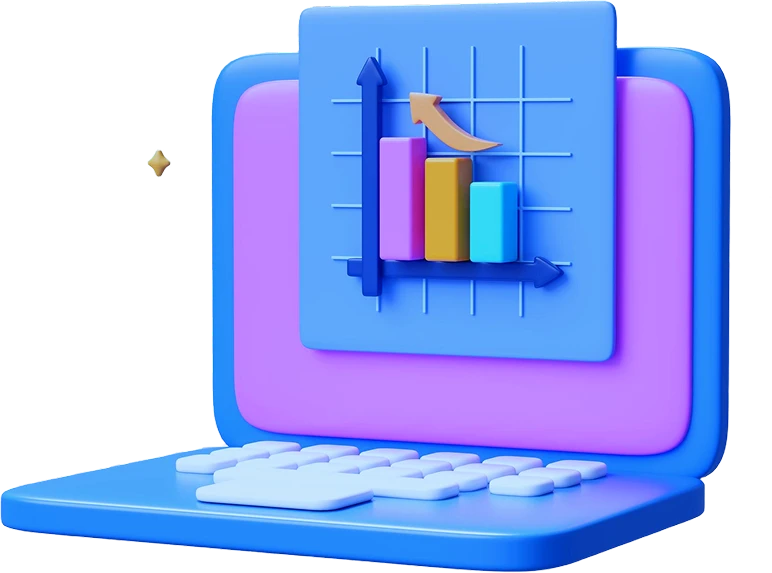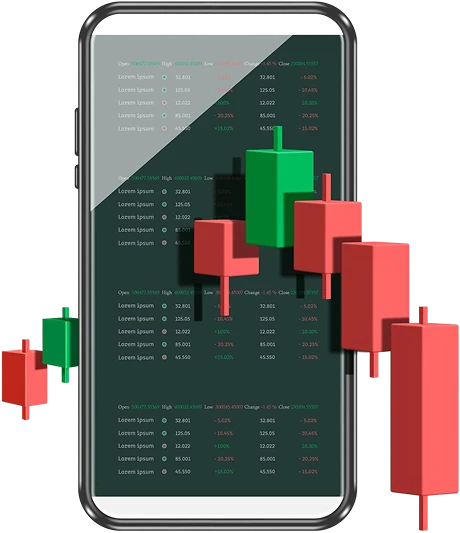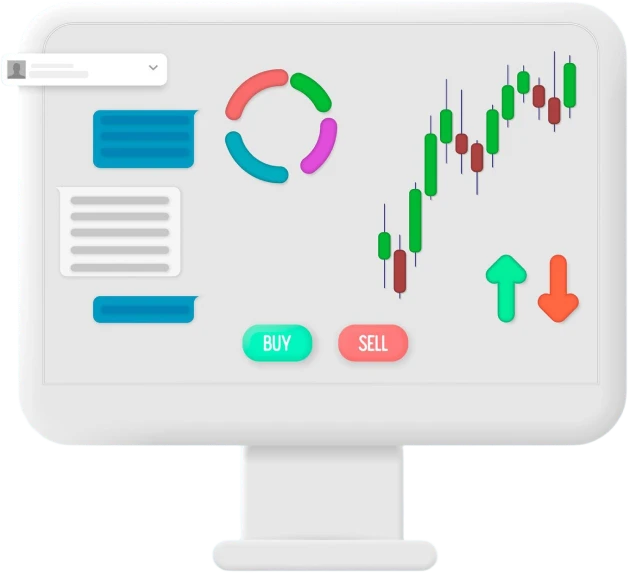Vlot Paycorex
Vlot Paycorex: AI for More Intelligent Crypto Analysis


By employing artificial intelligence to assess rapidly shifting conditions, Vlot Paycorex introduces sophisticated analytics to regular trading. Even in situations with high volatility, its architecture makes decision-making easier for traders of all skill levels. Clarity and flexibility remain crucial.
Massive datasets are processed by Vlot Paycorex in milliseconds, identifying odd trends and shifts. Simplifying market patterns without being overly intrusive to the user helps identify trading opportunities.
Users can align with tried-and-true strategies created by professional traders thanks to Vlot Paycorex'sintegratedcopy-trading functionality. Vlot Paycorex offers innovative ways to engage with cryptocurrency markets by leveraging AI to analyze structured data and behavioral trends, while maintaining a focus on usability and risk awareness.

Vlot Paycorex 's primary function is to use AI systems to search the global cryptocurrency market for new trends and movements. As market changes occur, real-time data models spot them, increasing user awareness and flexibility. At every step, users can count on a stable and secure experience thanks to the multilayered protection in place.

Vlot Paycorex provides users with quick access to AI tools that analyze digital assets' price movements in real-time. This eliminates uncertainty and delays. Rapidly changing market activity can be converted into proper signals with the aid of the platform's structured insights.

Vlot Paycorex is designed to extract signals from large amounts of data. By referencing past trends and adjusting to new activity, it provides users with a more comprehensive picture of possible movement. This provides a clear context for every market action, which facilitates timing decisions.
With Vlot Paycorex, users can explore fundamental, successful trading strategies—no automation required. The platform allows you to review and select expert-level approaches that align with your personal goals. Its AI tools analyze both historical and live market trends to give deeper insight. Whether you’re a beginner or advanced trader, this setup helps you apply strategies confidently, supported by data you can trust.

User trust is central to Vlot Paycorex. The platform keeps all personal data protected and communicates its usage policies. Since it doesn’t process trades directly, it avoids unnecessary risk, creating a reliable space to work with powerful, AI-powered market tools.
A typical analysis tool is not all that Vlot Paycorex is. It provides users with a better understanding of changing market structures by combining real-time observation with AI interpretation. From identifying patterns in price action to recognizing changes in behavior, the platform converts unstructured signals into structured feedback to help users make more informed decisions.
Digital trends are continuously monitored by Vlot Paycorex to identify when and how movements are occurring. Alerts and updates provide users with clarity, enabling them to refine their timing and strategy. These insights help you confidently and swiftly adjust to actual shifts in market activity.
Vlot Paycorex delivers structured intelligence to support smarter trading decisions. By using advanced AI to track fast-moving data, Vlot Paycorex uncover trends, and reduce response time, it acts as a clear, reliable guide in the often unpredictable world of digital assets.
At the core of Vlot Paycorex is a responsive AI engine that adapts instantly to market changes. It analyzes shifts with precise timing, offering insights that are consistent and actionable—helping traders cut through uncertainty and stay focused on key asset behavior.
The adaptive AI behind Vlot Paycorex blends historical behavior with real-time updates. This dynamic system stays aligned with changing market conditions, allowing it to identify patterns faster and help users refine their strategies as the crypto landscape shifts.
Running 24/7, Vlot Paycorex continually scans the markets, processing live data the moment it arrives. This ensures users get timely signals and stay informed about key movements—day or night—so they can respond with greater speed and confidence.
From step-by-step walkthroughs to technical support, Vlot Paycorex offers guidance tailored to every skill level. Whether you're just starting or deep into advanced trading, help is always available to keep your experience smooth, stable, and productive.
Vlot Paycorex is designed to track the crypto market as it happens, using advanced AI to read real-time behavior and detect changes across digital assets. It helps users understand where the market may be headed, making it easier to adjust strategies based on current developments. Whether you’re just starting or already experienced, Vlot Paycorex adapts to you.
Instead of watching charts all day, let Vlot Paycorex do the heavy lifting. Its AI tools identify key patterns and present real opportunities, while insights from expert traders are built in to guide your next move. The platform remains informative, not controlling, so you retain full control over your trades.
Security is a top priority. Vlot Paycorex uses strong encryption and privacy-first protocols to protect your activity and data. From helpful walkthroughs to advanced tips, everything is designed to make your experience smoother and safer, so you can trade confidently in today’s fast-moving crypto environment.

A structured approach to market analysis leads to more consistent decision-making. Vlot Paycorex is built to support a range of trading styles, whether users are focused on short-term moves or long-term positioning. By delivering insights into emerging trends and offering flexible analysis tools, it enables traders to adjust their strategies to fit evolving market conditions.
Vlot Paycorex utilizes real-time, AI-powered data to identify emerging patterns and provide timely strategy recommendations. This supports adaptive positioning—whether you're updating a broader plan or reacting to a sudden shift. The platform is designed to shape analysis around each user’s current objectives, making every move more aligned and intentional.

Every trader has a preferred style—some act on short-term volatility, while others focus on long-term growth. Vlot Paycorex gives users the tools to analyze both approaches in real time, offering side-by-side insights that help clarify which method aligns best with individual goals.
Liquidity influences how easily assets move—and that affects trade timing. When liquidity is high, trades tend to flow smoothly; when it’s low, price swings can be more unpredictable. Vlot Paycorex continuously evaluates these conditions to help users choose better entry points and understand the dynamics behind price shifts.
Vlot Paycorex helps traders plan with precision. Its AI identifies high-impact price zones and evaluates risk-to-reward ratios. By assessing stop levels, return potential, and trend strength, users can develop clearer strategies and avoid reactive decisions.
With Vlot Paycorex, trading decisions are powered by live data and intelligent analytics. Instead of reacting on impulse, users follow structured signals that reflect current market conditions—allowing for fast, smart execution with confidence.
Vlot Paycorex is equipped with a range of powerful tools to help users analyze market behavior more effectively. Key indicators, such as the Moving Average Convergence Divergence (MACD), Stochastic Oscillator, and Fibonacci levels, provide targeted insights into momentum, timing, and key support or resistance zones.
Fibonacci levels help identify areas where the price may pause or reverse based on historical movement. Stochastic indicators reveal potential overbought or oversold conditions, while the MACD highlights shifts in direction and momentum strength, providing users with a well-rounded view of market dynamics.
AI takes this further by recognizing recurring data patterns and making insights easier to interpret. With this combination of technical indicators and AI-enhanced clarity, users of Vlot Paycorex can more effectively identify trend changes, understand evolving market conditions, and confidently refine their strategies—even in rapidly changing markets.

How traders feel—whether confident or cautious—often influences where the market heads next. Vlot Paycorex analyzes sentiment signals from news impact, trading volume, and public discussions to reveal whether optimism or uncertainty is on the rise. These insights provide valuable context behind the current market tone.
Vlot Paycorex scans both real-time and historical sentiment data to detect major shifts in mood. A rise in positive sentiment may point to upward momentum, while growing hesitation could signal downside pressure. This helps users refine timing strategies based on how the broader market is reacting.
When paired with technical signals, sentiment analysis becomes even more powerful. Vlot Paycorex blends these layers together, highlighting emerging themes and helping users respond more effectively to sudden changes, all while staying aligned with the market’s overall direction.

Big-picture economics shape the way crypto moves. From interest rate hikes to inflation news, changes in the global economy can push digital assets in new directions. That’s where Vlot Paycorex steps in—using AI to track and interpret these signals so you’re never caught off guard.
Want to know how past rate changes affected Bitcoin? Or what today’s inflation report could mean for market sentiment? Vlot Paycorex breaks it all down, providing you with clear context and actionable insights.
Instead of drowning in headlines, you’ll get clean, real-time guidance from Vlot Paycorex—helping you connect economic trends to crypto movement and make smarter calls when the pressure’s on.

Time is crucial in markets that move quickly. AI is used by Vlot Paycorex to analyze both historical and real-time data, enabling it to determine when momentum is increasing or decreasing. This increases users' strategic confidence by allowing them to better match their actions with the direction of prices.
Finding trends and periods of high activity where possible breakout points could occur is another benefit of using Vlot Paycorex. By providing a more thorough understanding of volatility and movement behavior, these insights—all based on structured analytics—assist in making more assured decisions.

A component of long-term planning is lowering concentrated exposure. This is supported by Vlot Paycorex, which examines the performance of various asset classes in various market conditions. These assessments help users develop stronger and more resilient allocation structures and offer a helpful viewpoint on preserving diversification.
Vlot Paycorex eliminates unnecessary signals to help expose rapidly evolving market shifts. By identifying smaller movements as they occur, its AI technology provides users with immediate insight into quickly emerging activity patterns. This facilitates the fine-tuning of strategies to adapt to changing circumstances.
Through AI-driven observation, Vlot Paycorex finds these early indicators when asset momentum increases quickly. To determine when prices are about to enter new movement phases, the platform focuses on trend strength and acceleration. These insights help users understand and respond to changes in specific assets.
Digital markets can exhibit volatility in unexpected ways. To help users gain clarity during turbulent shifts, Vlot Paycorex utilizes real-time evaluation tools to interpret these changes. Through the analysis of abrupt variations, the platform enhances market awareness and facilitates confident strategy direction in unpredictable circumstances.
Vlot Paycorex helps users comprehend and react to changes by fusing AI-driven monitoring with expert analysis. Its algorithms analyze vast amounts of market activity and convert them into highly specific suggestions, amplifying planning, timing, and strategy.
This system enables users to maintain flexibility in a fast-paced environment by striking a balance between usability and data interpretation. Both sophisticated modeling and streamlined formats can be utilized to evaluate market behavior, enabling users to gain a deeper understanding of dynamic trends in real-time.

Vlot Paycorex uses AI to monitor live market activity, scanning for changes in momentum, liquidity, and sentiment. It identifies trends early and updates insights as conditions shift—so users can react faster and smarter.
AI powers Vlot Paycorex by constantly analyzing large-scale market data and behavior patterns. It adapts insights in real time, helping users better understand digital asset performance as the market moves.
With an AI engine that reads thousands of data points every second, Vlot Paycorex transforms raw activity into clear, timely signals, giving traders a real-time edge without manual tracking.
| 🤖 Joining Cost | No fees for registration |
| 💰 Operational Fees | No costs whatsoever |
| 📋 Registration Simplicity | Registration is quick and uncomplicated |
| 📊 Focus of Education | Lessons on Cryptocurrencies, Forex Trading, and Investments |
| 🌎 Countries Covered | Excludes the USA, covers most other countries |